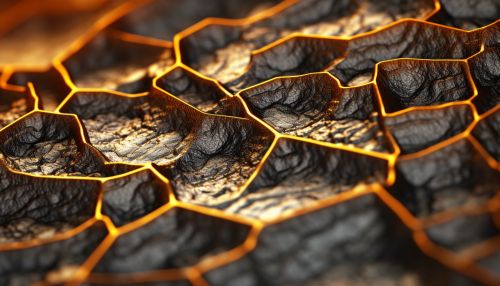High-Entropy Alloys and Their Applications
Introduction
High-entropy alloys (HEAs) are a class of materials that have revolutionized the field of metallurgy and materials engineering. Unlike traditional alloys which typically consist of one principal element with smaller amounts of other elements, HEAs are composed of multiple principal elements, often five or more, in roughly equal proportions. This unique composition leads to a high configurational entropy, hence the name "high-entropy alloys".


Composition and Structure
The defining characteristic of HEAs is their high entropy of mixing, which results from the near-equal proportions of multiple principal elements. This high entropy stabilizes the solid solution phases over the intermetallic compounds, which are generally brittle and less useful for engineering applications. The principal elements in HEAs can be any combination of metals, but are often transition metals such as iron, nickel, cobalt, and manganese.
The structure of HEAs is typically either body-centered cubic (BCC) or face-centered cubic (FCC), although other structures such as hexagonal close-packed (HCP) can also occur. The specific structure depends on the atomic radii and electronegativities of the constituent elements, as well as the temperature and pressure conditions during the alloy's formation.
Properties
HEAs exhibit a wide range of properties, many of which are superior to those of conventional alloys. These include high hardness and strength, excellent wear and corrosion resistance, and good high-temperature stability. These properties are largely a result of the high entropy of the alloy, which leads to a high degree of lattice distortion and a high resistance to dislocation motion, both of which contribute to the alloy's strength.
HEAs also exhibit a phenomenon known as the "cocktail effect", where the properties of the alloy are not simply the average of the properties of the constituent elements, but can be significantly better. This is due to the high degree of randomness in the alloy's atomic structure, which can lead to novel and unexpected properties.
Applications
Due to their unique properties, HEAs have found a wide range of applications in various industries. In the aerospace industry, they are used in the manufacture of high-performance components such as turbine blades and rocket nozzles, where their high strength and temperature stability are crucial. In the automotive industry, they are used in the production of lightweight, high-strength components such as engine blocks and chassis parts.
HEAs are also used in the energy sector, where their excellent corrosion resistance makes them ideal for use in harsh environments such as offshore oil and gas platforms. In the medical field, they are used in the manufacture of biomedical implants, where their high biocompatibility and resistance to wear and corrosion are important.
Future Perspectives
The field of HEAs is still relatively young, and there is much research to be done to fully understand and exploit these materials. Future research directions include the development of new HEAs with tailored properties, the investigation of the underlying mechanisms behind the unique properties of HEAs, and the exploration of new applications for these materials.
